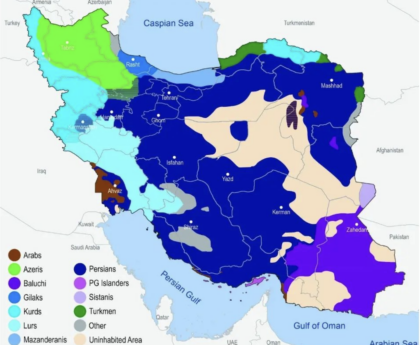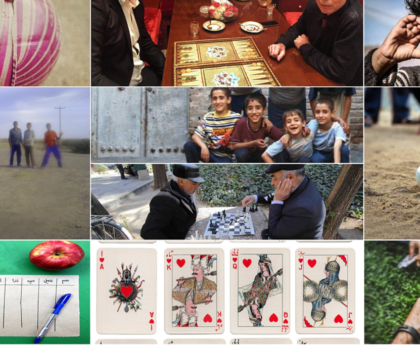Poetry and language are defining cultural aspects and an integral part of Iranian consciousness. Speaking Persian, or Farsi, is revered by people as they pride themselves for having maintained their language and pre-Islamic identity following the Muslim conquest of the 7th century AD. Today, during times of turmoil, Iranians still turn to poetry as a source of hope, comfort, and joy.
Traditional Persian poetry, while constantly in the lives of Iranians, was further revived by free-thinking women of the twentieth century, who used their power of language to publish poetry in order to give voice and expose issues of women’s rights, poverty and social injustice.
Ferdowsi (940 – 1019-25)
Perhaps Iran’s most famous poet, Ferdowsi is credited for writing the Shahnameh, the national epic of the Persian speaking world and the longest work of epic poetry ever written, composed of more than 60,000 verses. Translated as The Book of Kings, the Shahnameh spans the history of Iran from mythical times until the Sassanid period in the 7th century, telling the tales of characters who form the currents of good and evil which run throughout human I history.
I turn to right and left, in all the earth I see no signs of justice, sense or worth: A man does evil deeds, and all his days are filled with luck and universal praise; Another’s good in all he does – he dies a wretched, broken man whom all despise.
Omar Khayyam (1048 – 1131)
Omar Khayyam was an influential intellectual figure, whose works spanned the fields of astronomy, mathematics, philosophy and poetry. Khayyam’s treatise on algebra proved hugely important in mathematical circles for centuries while the modern Iranian calendar is based on his research in astronomy. It wasn’t until the 19th century that his poetry was rediscovered and translated by Edward Fitzgerald, introducing his work both to a Western audience and to a new generation of Iranians.
Living life tomorrow’s fate, though thou be wise,
thou canst not tell nor yet surmise;
Pass, therefore, not today in vain, for it will never come again.
Rumi (1207 – 1273)
One of the most influential poets, Rumi’s poetry has inspired other writers and readers for centuries. His work is largely spiritual, stemming from his Sufi beliefs and his position as an important spiritual teacher and leader – revolving around ideas of universality, divinity and love.
Rumi’s most famous works, The Masnavi, is a collection of over 25,000 verses filled with tales, moral discourses and analogies which explore the
relationship between the self and God.
My friend, a human’s life is a precious pearl.
This life that is created as the most beautiful form [human form] precedes the ninth heaven.
This life that is as the most beautiful form is beyond thought.
Hafez (1325 – unknown)
A hugely influential poet, Hafez went on to inspire generations of new poets both in Iran and in the wider world (including Goethe).
Hafez is known for his unique blend of the mystical and the human, blending representations of both divine and romantic love in verses filled with elaborate metaphors and vivid imagery which convey multiple meanings. Today, his marble tomb stands underneath a beautifully tiled pavilion in the Musalla Gardens in Shiraz and is one of the city’s greatest tourist attractions.
I wish I could show you, when you are lonely or in darkness, the astonishing light of your own Being!
Parvin Etesami (1907 – 1941)
Encouraged by her parents, Etesami began writing poetry from a young age. Through allegories and imagery revolving around nature, and the incorporation of classical Persian poetry forms and structure, she revealed problems facing Iranian society at the time, including the hardships of the poverty-stricken, and women’s rights issues.
Etesami would also expose those who used religion as a political tool.
Formerly a woman in Iran was almost non-Iranian.
All she did was struggle through dark and distressing days.
Her life she spent in isolation; she died in isolation.
What was she then if not a prisoner?
None ever lived centuries in darkness like her.
None was sacrificed on the altar of hypocrisy like her.
In the courts of justice no witness defended her.
To the school of learning she was not admitted.
All her life her cries for justice remained unheeded.
This oppression occurred publicly; it was no secret.
Simin Behbahani (1927 – 2002)
Similar to Etesami, Behbahani began writing at a young age. She is known for her poems in a ghazal-style of poetic form, and was affectionately referred to as the “Lioness of Iran.” Behbahani was twice nominated for the Nobel Prize for Literature, and is known for her influence both in Iranian poetry and issues of human rights. Her poetry was highly political, reflected her strong feminist views, and provided a voice for the oppressed and marginalised in Iran.
My homeland, I shall build you again
With bricks of my soul.
I shall raise your pillars again
With pieces of my bone
Forough Farrokhzad (1934 – 1967)
Farrokhzad was a controversial figure in Iran’s conservative society. Farrokhzad would challenge her emotions into her work. She would unapologetically write politically engaging, and intensely personal poetry. Her work was considered to be too bold when it came to its criticism of the position of women in Iran, however she would continue to push boundaries and become a powerful voice, creating a modern style which embraced a feminine perspective.
I don’t repent,
thinking of this resignation, this pained surrender.
I’ve kissed my life’s cross on the hills of my execution.
In night’s cold streets couples always part hesitantly.
In night’s cold streets
there are no sounds, just voices calling Goodbye, goodbye.





